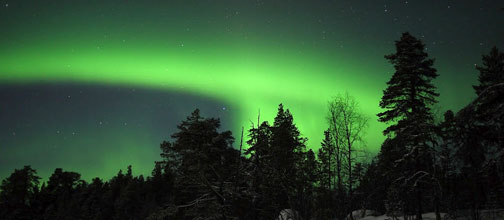But later travelers described sounds to go with the light show.
The lights happen when gas from the sun reaches earth's magnetic field; the charged particles flow along the planet's magnetic lines, but that is too far away for people to hear anything.
Perhaps not, say researchers at Aalto University in Finland, who say they have located where the sounds associated with the northern lights are created. They formed about 70 meters above the ground level in their measured case.
They located the sound sources by installing three separate microphones in an observation site where the auroral sounds were recorded. They then compared sounds captured by the microphones and determined the location of the sound source. The aurora borealis was seen at the observation site. The simultaneous measurements of the geomagnetic disturbances, made by the Finnish Meteorological Institute, showed a typical pattern of the northern lights episodes.
”Our research proved that, during the occurrence of the northern lights, people can hear natural auroral sounds related to what they see. In the past, researchers thought that the aurora borealis was too far away for people to hear the sounds it made. This is true. However, our research proves that the source of the sounds that are associated with the aurora borealis we see is likely caused by the same energetic particles from the sun that create the northern lights far away in the sky. These particles or the geomagnetic disturbance produced by them seem to create sound much closer to the ground,” said Professor Unto K. Laine from Aalto University.

Northern Lights. Credit: Aalto University
Details about how the auroral sounds are created remain a mystery. The sounds do not occur regularly when the northern lights are seen. The recorded, unamplified sounds are similar to crackles or muffled bangs which last for only a short period of time. Other people who have heard the auroral sounds have described them as distant noise and sputter.
Because of these different descriptions, researchers suspect that there are several mechanisms behind the formation of these auroral sounds, which are so soft that one has to listen very carefully to hear them and to distinguish them from the ambient noise.
Published in the proceedings of the 19th International Congress of Sound and Vibration, being held in Vilnius, Lithuania through July 12th, 2012.






Comments